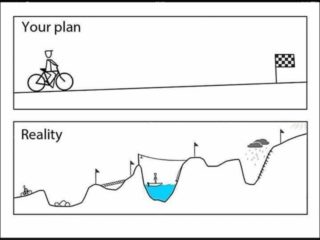
In light of recent circumstances, we on the Porch felt it would be useful to dive into crisis management.
The Bare Bones:
Clear, open communication to employees is crucial. Analyze the problem and get to fixing it! Strategy is a key component of any crisis management plan.
What you might include in your crisis comm plan:
The communication aspect of the crisis communication plan should include (for each scenario) progressive communications, their audiences, and communication channels. For example, it is better to tweet out a holding statement to buy some time while figuring out what the situation is and later updating with more detailed information as you know more. Having all of this documented is helpful because it will reduce the chances people get flustered, thus helping them take action.
Other Tactical Things You Can Implement:
Crisis simulation is one strategy that can be helpful because employees will be able to recognize when their emotions ramp up during an actual crisis and can therefore reign them back in. Leadership is also important because people are looking to leaders for support. According to Fast Company, a company that succeeds in a crisis has “Leaders who can show that change is being made or something’s being fixed, that a product is being recalled or replaced, who take action that restores the confidence of the consumer, or the investor, or the employees.”
A study from Business and Society Review mentions the TTR Test, which stands for Transparency, Two-Way symmetrical communication, and Right Time. Every crisis communications plan should cover the TTR Test!
Transparency is key for businesses in crisis management because it allows information to be made available and easily understandable. Two-way symmetrical communication is pivotal because it is a business’s duty to foster communication. Right Time is all about delivering prompt, credible responses.
Words of advice from another Fast Company article include:
- Companies must stand on principle, not on politics
- Think about your employees
- Prepare to get ahead of the curve
An article from Cassling encourages a crisis communication plan to be as concise as possible. It also encourages the use of a crisis management team who collects information, creates key messages, and handles media. Internal procedures should always be accounted for, such as deciding how employees will receive messages. Employee training is also necessary if a crisis were to occur. Cassling also encourages companies to utilize social media, even suggesting a ghost website that can be made live in the event of a crisis.
Key takeaways:
Be knowledgeable and communicate, communicate, communicate! There is nothing you can do when a crisis hits, so keep calm and stick to your plan. And remember: the most important thing is to not get emotional!


 Although it may seem counter-intuitive, one of the main components of your crisis management plan should be proactive, positive outreach NOW –
Although it may seem counter-intuitive, one of the main components of your crisis management plan should be proactive, positive outreach NOW –  It’s certainly easier to stay positive on some days than others, and I am no expert on finding personal positivity. I am, however, well versed on the importance of staying positive when dealing with the media, especially when the reason the reporters are there is not ideal. The impact of negativity on your image and/or your company’s image is severe, and it can be incredibly difficult to rebound from
It’s certainly easier to stay positive on some days than others, and I am no expert on finding personal positivity. I am, however, well versed on the importance of staying positive when dealing with the media, especially when the reason the reporters are there is not ideal. The impact of negativity on your image and/or your company’s image is severe, and it can be incredibly difficult to rebound from